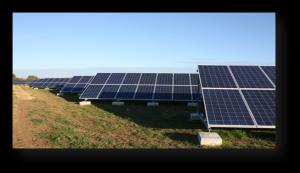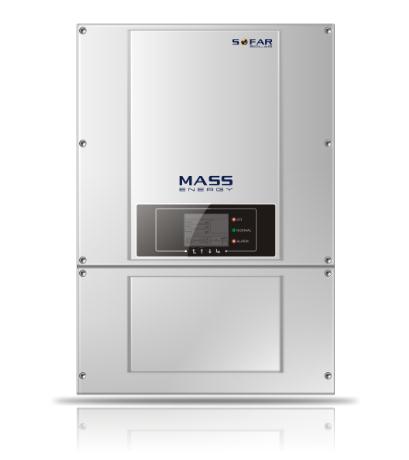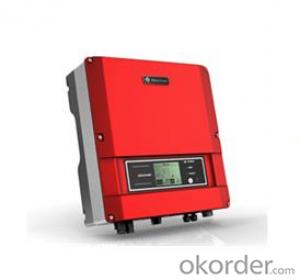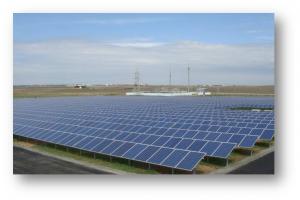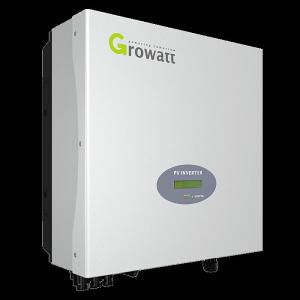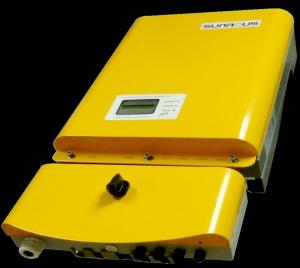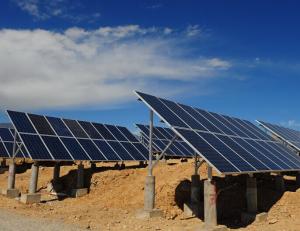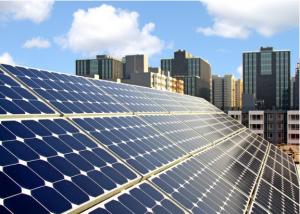Grid-tied solar PV inverter 17000TL Remoteactive/Reactive Power Limit Control
- Loading Port:
- Shanghai
- Payment Terms:
- TT or LC
- Min Order Qty:
- 10 unit
- Supply Capability:
- 10000 unit/month
OKorder Service Pledge
OKorder Financial Service
You Might Also Like
High-yield
·Max98.2% efficiency
·Realtime precise MPPT algorithm for max harvest
·Wideinput voltage operation range from 250V to 960V
Allin one. Flexible and economical system solution
·DCswitch(option)
·DCsurge protection device(option)
·ACsurge protection device(option)
·Built-inPV Combiner(option)
·Powermanagement unit
·Optimumselection for big PV plants, commercial buildings...
Lowmaintenance cost
·Detachablecover for easy installation
·Rust-freealuminum covers
·Flexiblemonitoring solution
·Multifunction relay can be configured to show various inverter information
Intelligentgrid management
·LVRTsupport
·Reactivepower adjustable
·Selfpower reducer whenover frequency
·Remoteactive/reactive power limit control
Technical Data | SOFAR 10000TL | SOFAR 15000TL | SOFAR 17000TL | SOFAR 20000TL |
Input (DC) | ||||
Max. Input Power | 10400W | 15600W | 17700W | 20800W |
Max. DC power for single MPPT | 6750(450V-850V) | 10500(500V-850V) | 10500(500V-850V) | 12000(500V-850V) |
Number of independent MPPT | 2 | |||
Number of DC inputs | 2 for each MPPT | 3 for each MPPT | ||
Max. Input Voltage | 1000V | |||
Start-up input voltage | 350V(+/-1V) | |||
Rated input voltage | 600V | |||
Operating input voltage range | 250V-960V | |||
MPPT voltage range | 350V-850V | 370V-850V | 420V-850V | 430V-850V |
Max. Input current per MPPT | 15A/15A | 21A/21A | 21A/21A | 24A/24A |
Input short circuit current per MPPT | 20A | 27A | 27A | 30A |
Output(AC) | ||||
Rated power(@230V,50Hz) | 10000VA | 15000VA | 17000VA | 20000VA |
Max. AC power | 10000VA | 15000VA | 17000VA | 20000VA |
Nominal AC voltage | 3/N/PE, 220/380 3/N/PE, 230/400 3/N/03, 240/415 | |||
Nominal AC voltage range | 184V-276V | |||
Grid frequency range | 50Hz, +/-5Hz | |||
Active power adjustable range | 0~100% | |||
Max. Output Current | 15A | 22A | 25A | 29A |
THDi | <3% | |||
Power Factor | 1(Adjustable +/-0.8) | |||
Performance | ||||
Max efficiency | 98.2% | |||
Weighted eff.(EU/CEC) | 97.6%/97.8% | 97.9%/98% | 97.9%/98% | 98%/98.1% |
Self-consumption at night | <1W | |||
Feed-in start power | 45W | |||
MPPT efficiency | >99.5% | |||
Protection | ||||
DC reverse polarity protection | Yes | |||
DC switch | Optional | |||
Protection class/overvoltage category | I/III | |||
Input/output SPD(II) | Optional | |||
Safety Protection | Anti-islanding, RCMU, Ground fault monitoring | |||
Certification | CE, CGC, AS4777, AS3100, VDE 4105, C10-C11, G59(more available on request) | |||
Communication | ||||
Power management unit | According to certification and request | |||
Standard Communication Mode | RS485, Wifi(optional), Multi-function relay | |||
Operation Data Storage | 25 years | |||
General data | ||||
Ambient temperature range | -25℃ ~ +60℃ | |||
Topology | Transformerless | |||
Degree of protection | IP65 | |||
Allowable relative humidity range | 0 ~ 95% no condensing | |||
Max. Operating Altitude | 2000m | |||
Noise | <45dB | |||
Weight | 45kg | 45kg | 48kg | 48kg |
Cooling | Nature | Fan | Fan | Fan |
Dimension | 707×492×240mm | |||
Warranty | 5 years | |||
After-sales Services Undertakings
1. During the equipment commissioning period, the company will send scheduler to commissioning to ensure debugging smoothly and a one-time test commissioning.
2. The company is responsible for professional users’ on-site operator training and technical exchange.
3. The long-term tracking service system: we practice lifelong quality of our product tracking service, and we also will take effective measures and solutions for the user of the technical issues and equipment problems.
4. Regularly listen to opinions and suggestions of users, to provide users with new trends in technological innovation, new product information and enhance mutual understanding.
5. Any problems, the company will provide solutions for users within 48 hours.
FAQ
1. How long will my inquiry get response?
Your inquiry related to our products or prices will be replied within 24 hours.
2. Can I get professional service and suggestion?
Well-trained and experienced staffs to answer all your questions in fluent English.
3. Do you accept OEM or customized design?
OEM & ODM, any your customized lightings we can help you to design and put into product.
4. What if I need specific design?
Distributorship are offered for your unique design and some our current models.
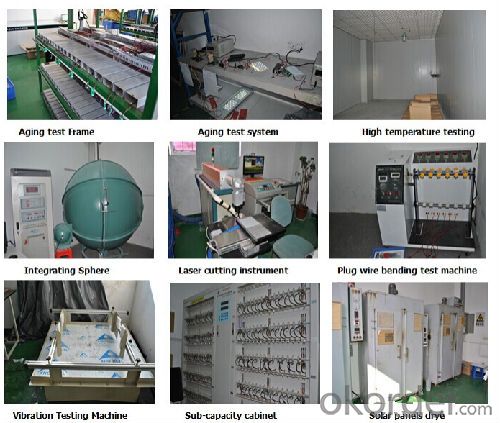
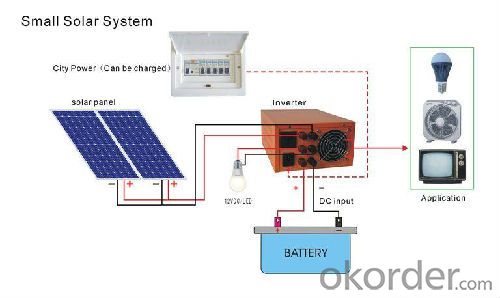

- Q: How does the power factor affect the performance of a solar inverter?
- The power factor affects the performance of a solar inverter by determining the efficiency and reliability of the system. A low power factor can result in increased losses and reduced overall efficiency, leading to higher energy consumption and reduced power output. In contrast, a high power factor improves system performance by minimizing losses and maximizing the utilization of available power, resulting in higher efficiency and better overall performance of the solar inverter.
- Q: How does a solar inverter convert DC to AC?
- A solar inverter converts direct current (DC) into alternating current (AC) by utilizing a two-step process. First, it converts the DC electricity generated by solar panels into a high-frequency AC waveform. This is done by using electronic components, such as transistors or power semiconductors, to switch the DC input on and off rapidly. Next, the high-frequency AC waveform is transformed into a stable and synchronized AC output that is suitable for use in home or commercial electrical systems. This is achieved through the use of filters, transformers, and other circuitry that adjust the voltage, frequency, and waveform of the AC output to match the requirements of the utility grid or the electrical load being powered. Overall, the solar inverter's key function is to efficiently convert the DC electricity produced by solar panels into a usable form of AC electricity that can be used to power appliances, machinery, and other electrical devices.
- Q: What is the operating temperature range of a solar inverter?
- The operating temperature range of a solar inverter typically varies, but it is commonly between -20°C to 60°C.
- Q: What is the maximum output power of a solar inverter?
- The maximum output power of a solar inverter depends on its capacity and rating. It can range from a few hundred watts for residential inverters to several megawatts for commercial or utility-scale inverters.
- Q: Does a solar inverter require any additional cooling or ventilation?
- Yes, a solar inverter typically requires additional cooling or ventilation to operate efficiently and prevent overheating. The heat generated during the conversion of DC to AC power needs to be dissipated to maintain optimal performance and prolong the lifespan of the inverter.
- Q: Can a solar inverter be used in systems with multiple inverters?
- Yes, a solar inverter can be used in systems with multiple inverters. In fact, using multiple inverters is a common practice in larger solar power systems. Each inverter is connected to a separate set of solar panels, and they work together to convert the DC power generated by the panels into AC power that can be used in homes or businesses. Multiple inverters allow for increased power output and better system efficiency.
- Q: How does a solar inverter affect the overall energy consumption of a property?
- A solar inverter affects the overall energy consumption of a property by converting the direct current (DC) electricity produced by solar panels into alternating current (AC) electricity that can be used to power electrical appliances and equipment in the property. It ensures that the electricity generated by the solar panels is compatible with the property's electrical system, reducing the dependence on grid-supplied electricity. By efficiently converting solar energy into usable electricity, a solar inverter helps to lower the property's energy consumption from traditional sources and can potentially result in energy cost savings.
- Q: How does a solar inverter communicate with other system components?
- A solar inverter communicates with other system components through various methods such as wired connections or wireless technologies like Wi-Fi or Bluetooth. It exchanges information with components like solar panels, batteries, and control systems to monitor and regulate the flow of electricity, optimize energy production, and ensure safe and efficient operation of the solar power system.
- Q: What safety features should a solar inverter have?
- A solar inverter should have several safety features, including overvoltage protection, overcurrent protection, ground fault protection, and arc fault protection. Additionally, it should have robust insulation to prevent electrical shock hazards and be equipped with sensors to monitor temperature and prevent overheating. Finally, it should have a secure enclosure to protect against environmental factors such as water, dust, and debris.
- Q: Can a solar inverter be used with different types of solar PV systems (roof-mounted, ground-mounted, etc.)?
- Yes, a solar inverter can be used with different types of solar PV systems, including roof-mounted, ground-mounted, and other variations. The primary function of a solar inverter is to convert the direct current (DC) electricity generated by solar panels into alternating current (AC) electricity that can be used to power appliances and feed into the electrical grid. This conversion process remains consistent regardless of the type of PV system being used. However, it's important to note that the specific requirements and specifications of the solar inverter may vary depending on the type of PV system. Different PV systems may have varying voltage and power outputs, which may require specific inverter models capable of handling those specific requirements. For example, ground-mounted solar systems may have larger arrays and higher power outputs compared to roof-mounted systems, necessitating a different inverter. Therefore, while a solar inverter can generally be used with different types of solar PV systems, it is crucial to choose an inverter that is compatible with the specific system's voltage, power output, and other technical specifications. It is always recommended to consult with a professional solar installer or technician to ensure the proper selection and installation of the solar inverter for your specific PV system.
Send your message to us
Grid-tied solar PV inverter 17000TL Remoteactive/Reactive Power Limit Control
- Loading Port:
- Shanghai
- Payment Terms:
- TT or LC
- Min Order Qty:
- 10 unit
- Supply Capability:
- 10000 unit/month
OKorder Service Pledge
OKorder Financial Service
Similar products
Hot products
Hot Searches
Related keywords
